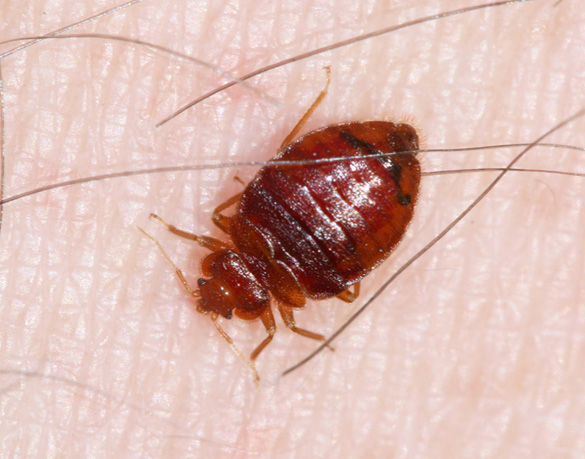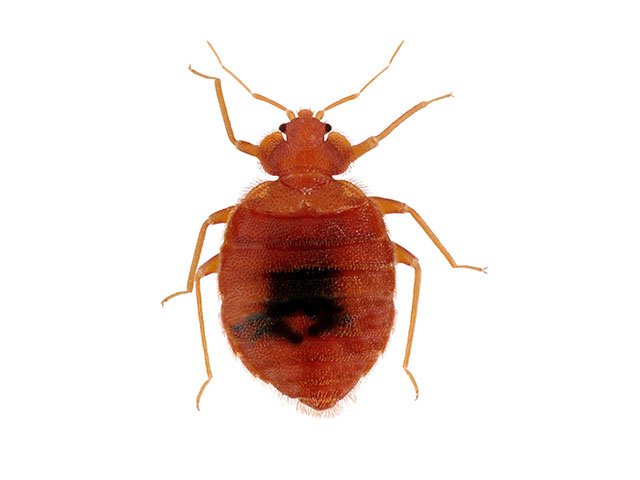How to Recognize Bed Bug Bites and Treat Them Quickly
Get Informed About the Kinds Of Pest Control Methods and Their Benefits for Homeowners
Understanding the different pest control methods readily available to property owners is essential for efficient pest administration. Homeowners who are educated can make tactical choices that not only address parasite issues yet also improve the total quality of their living atmosphere.
Chemical Pest Control Approaches
Chemical insect control approaches are a vital part of integrated insect monitoring strategies for property owners looking for effective remedies to pest infestations. These methods include the application of chemical materials designed to eliminate or hinder pests that endanger individual residential property, wellness, and comfort. Common chemicals used include insecticides, fungicides, herbicides, and rodenticides, each customized to target specific pests.
The primary advantage of chemical insect control is its rapid efficiency; numerous formulas give immediate results, reducing pest populations substantially quickly. Furthermore, developments in chemical formulas have brought about items that are extra eco pleasant and have lower toxicity levels for non-target microorganisms when used properly.

Biological Bug Control Strategies
Natural insect control methods have actually obtained prestige as home owners seek much safer and a lot more lasting alternatives to conventional chemical techniques. Biological insect control techniques make use of natural killers, bloodsuckers, or virus to manage pest populations successfully. This technique is not only ecologically pleasant but also reduces the danger of harm to non-target species, consisting of advantageous pests and wildlife.
One of the most usual biological control approaches involves presenting all-natural killers right into the environment. Ladybugs can be utilized to regulate aphid populations, while nematodes target soil-dwelling bugs like grubs. Furthermore, parasitoids-- microorganisms that survive or within a host-- can be utilized to regulate details insect varieties by laying eggs inside them, eventually bring about their demise.
One more approach is using biopesticides, which are acquired from all-natural materials such as microorganisms, minerals, or plants (bed bug exterminator). These products can effectively target insects while presenting marginal threat to pets and humans. Generally, biological parasite control strategies provide property owners with an effective means of bug administration that aligns with environmental concepts, promoting a much healthier living environment while lowering reliance on artificial chemicals
Mechanical Insect Control Approaches
Mechanical insect control approaches incorporate a variety of techniques that literally avoid or get rid of bugs without the usage of chemicals. These methods are especially valuable for home owners seeking ecologically friendly options while guaranteeing the security of their home.
One typical approach is using obstacles, such as traps, internet, and screens, which protect against parasites from getting in homes or particular areas. Installing window displays can efficiently keep pests out, while utilizing physical obstacles around gardens can discourage bigger bugs like bunnies or deer. In addition, mechanical traps developed for rats can record and remove these parasites without the requirement for harmful substances.
Another efficient technique entails making use of brooms and vacuums to get rid of insects directly from surfaces. Routine cleansing and upkeep can dramatically lower insect populaces by getting rid of food resources and hiding spots. Employing gadgets like ultrasonic parasite repellents can prevent different insects with sound waves try this website that are unpleasant to them however inaudible to people.
Social Parasite Control Practices
Social parasite control techniques concentrate on modifying the environment and management methods to develop problems that are less for pest invasions. These methods are basic in maintaining a well balanced community and minimizing the dependence on chemical interventions. By altering agricultural practices, house owners can effectively discourage insects while promoting plant wellness.
One typical method includes crop turning, which interferes with the life cycles of parasites by altering the sorts of plants expanded in a details area (bed bug exterminator). This not only reduces pest populaces but likewise boosts soil wellness. In addition, intercropping-- planting diverse crops in distance-- can puzzle bugs and reduce their ability to situate their recommended host plants
Water management is an additional critical facet of cultural practices. Proper irrigation methods can stop standing water, which offers as a reproduction ground for insects and various other parasites. Preserving tidiness in and around the home, such as routinely eliminating particles and food waste, can dramatically lower bug tourist attraction.
Including these cultural practices right into a comprehensive insect monitoring approach allows house owners to produce a setting that naturally hinders parasites, thereby improving the efficiency of various other control techniques while advertising lasting horticulture and landscaping.

Integrated Pest Management Approaches
Integrated Bug Management (IPM) represents an alternative technique that integrates numerous techniques to successfully manage pest populations while reducing environmental impact. This method integrates biological, social, physical, and chemical methods to accomplish sustainable bug control. By evaluating pest populaces and their all-natural opponents, IPM stresses monitoring and determining bugs prior to applying control measures.
Among the core principles of IPM is making use of limits, which develop the level of parasite activity that necessitates intervention. This makes sure that treatments are used just when essential, lowering the reliance on chemical pesticides. Organic control approaches, such as presenting all-natural predators or parasites, operate in combination with cultural methods like crop turning and environment adjustment to interrupt pest life process.
Additionally, IPM urges the use of least-toxic chemical options when intervention is necessary, focusing on items that posture minimal threat to non-target organisms and the atmosphere. For property owners, adopting IPM comes close to not only enhances the effectiveness of pest administration however additionally visit here promotes a much healthier living atmosphere, cultivating biodiversity and lowering chemical exposure. Ultimately, IPM encourages property owners to make enlightened decisions that stabilize pest control with ecological obligation.
Final Thought
In conclusion, understanding the different bug control approaches encourages house owners to make informed choices regarding pest administration. Each technique-- chemical, organic, mechanical, cultural, and incorporated pest management-- supplies unique benefits that provide to different demands and preferences.
Recognizing the numerous parasite control approaches available to homeowners is necessary for efficient bug management.Chemical pest control approaches are a vital element of integrated pest monitoring strategies for home owners seeking reliable remedies to pest infestations. In general, biological parasite control methods supply house owners with an efficient methods of parasite administration that aligns with ecological principles, advertising a healthier living environment while reducing reliance on artificial chemicals.
Social insect control techniques focus my site on customizing the setting and management methods to create problems that are much less favorable to pest problems.In verdict, comprehending the different insect control methods empowers house owners to make educated choices regarding pest management.